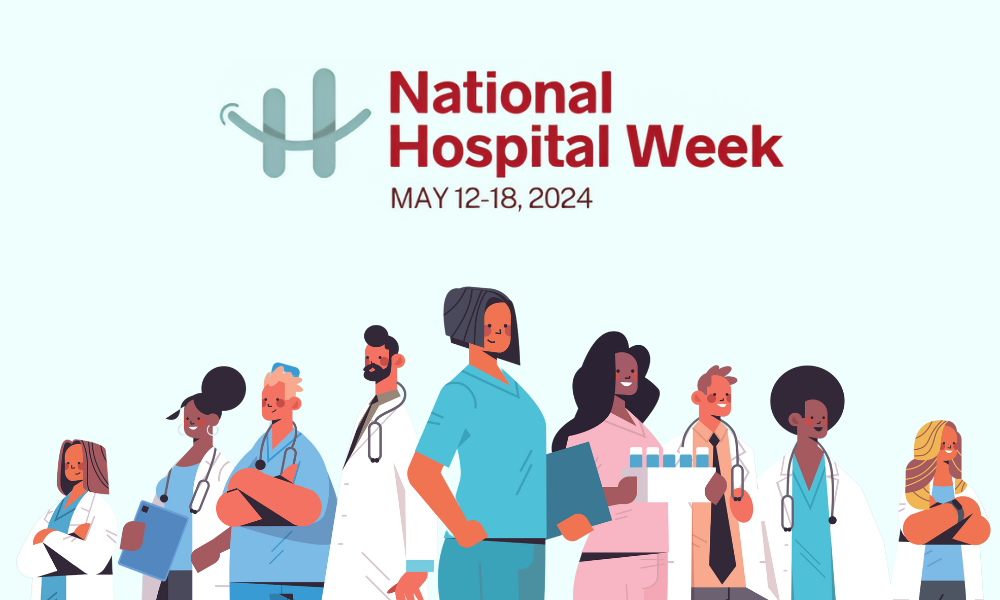This is the fourth of a six-part series about lessons learned from the COVID-19 pandemic, inspired by a conversation with Interim Physicians Medical Director Ken Teufel, MD.
Lesson #4: Hospitals and other healthcare facilities must continue to deliver routine care and elective procedures during a crisis
Both healthcare system solvency and the wellness of millions of Americans depend on it. Hospitals and healthcare systems must be allowed to multi-task, proceeding with routine and elective care while preventing exposure to highly infectious diseases among generally “well” populations.

Locum tenens providers could help healthcare facilities offer the best of both worlds.
After all, filling gaps in clinician coverage is where the healthcare staffing industry–and locum tenens providers in particular–come in.
In fact, one of the founders of the locum tenens industry, Interim Physicians Medical Director Ken Teufel unwittingly started one of the first locum tenens companies to meet the needs of small-town, rural America. Having run his own private practice in obstetrics, gynecology, and pediatrics for more than a decade, he began covering for physicians in neighboring locations who were out of the office–eventually closing his private practice and working “backup,” or “locum tenens,” full-time.
Things have gotten more complicated since those days.
Recent news reports indicate that, in “hot-spot” metro areas, administrators and physicians from nonemergent specialties–many of whom hadn’t practiced hands-on in decades–jumped into action on the pandemic’s front lines to help care for an overflow of patients infected with COVID-19.
Employing locum tenens strategically could help healthcare facilities minimize service disruptions while deploying needed resources to expand emergency care capacity. Particularly if increased flexibility in physician licensing and credentialing introduced during the pandemic continues, healthcare staffing firms can deploy locum tenens providers and allied health professionals to areas facing sudden surges in demand in a matter of days.
Also, while hiring ‘expensive’ locum tenens providers might be the last thing healthcare facilities beleaguered by COVID-19 would consider in trying to recover, strategically hiring temporary–instead of permanent–providers could make sense. In its most recent blog post, Integrity Locums suggested a few ways.
- Hire locum tenens providers before recommitting to staff longer-term.
Many healthcare organizations furloughed or laid off staff as a result of COVID-19. Reintroducing too many sidelined providers at once could boomerang amid the unpredictable spread and timing of the latest coronavirus. - Hire locum tenens providers to optimize flexibility.
Using temporary locum tenens providers can assure quality patient care without requiring long-term commitments. - Hire locum tenens providers to establish a ‘new normal.’
Healthcare organizations that survived COVID-19 must now adjust their staffing strategies. What’s your new normal? How many ‘permanent’ providers can you justify?
Strategically employing locum tenens providers while assessing patient volume and determining a longer-term staffing strategy could buy time and save costs in the end.
But why must healthcare facilities continue to deliver routine care and elective procedures during a crisis?
Hospitals, Health Systems Hurting
We are starting to see the extent to which the COVID-19 pandemic has damaged the financial health of America’s healthcare industry. Among one day’s top-story headlines from Becker’s Hospital CFO Report were these: “Mass General Brigham Cuts Exec Pay, Projects $2B in Losses;” “7 health systems report $1B+ Losses in Q1;” “TriHealth Eliminates 440 Positions to Cut Costs;” “Texas Health System Refiles for Bankruptcy;” “Tower Health to Cut 1,000 Jobs.”
In a story posted June 17, Becker’s quoted Butler Health System President and CEO Ken DeFurio as saying his organization, which runs a 326-bed, acute-care hospital in Butler County, Pa., probably would continue to operate at a loss until January or February 2021. “The health system announced the week of June 15 that it will lay off 57 workers and close its skilled nursing facility,” according to the article.
The director of the Chartis Center for Rural Health (Chartis Center) recently indicated that elective procedures, which were halted during the pandemic, produce most (79 percent) of rural hospital volume and revenue. Another major revenue source, emergency room volume, also has declined.
In fact, Becker’s Hospital Review reported that emergency department (ED) volume fell 49 percent during the first quarter of 2020, with urban facilities seeing the largest declines. The analysis from the Emergency Department Benchmarking Alliance (EDBA) “includes self-reported, comparative ED volume data for the first four months of 2019 and 2020 from EDBA members representing 2,240 EDs nationwide.
Writing for RevCycle Intelligence on May 21, Jacqueline LaPointe highlighted Strata Decision Technology data (pulled from the National Patient and Procedure Volume Tracker), indicating that “the number of unique patients who sought hospital care decreased by an average of 54.5 percent in March and April as a result of the cancellation of elective procedures and other concerns during the COVID-19 crisis.”
Hit to Hospitals Continues
In a paper published April 29 in NEJM Catalyst, Drs. Michael L. Barnett, MS; Ateev Mehrotra, MPH & Bruce E. Landon, MBA, MSc, observed, “Hospitals have cancelled almost all elective procedures and outpatient visits, which include the highest margin services such as orthopedic, cardiac, and neurosurgical procedures. Although surgical admissions account for just over a quarter of hospital admissions, they account for almost half of hospital revenue. Moreover, since many surgical costs are fixed (e.g., operating rooms and equipment), cancelling surgeries has little impact on reducing the overall cost of running the hospital.”
While anticipating increased admissions related to COVID-19, the authors noted that, even with the higher coronavirus reimbursements Medicare has authorized, “payments for patients with pneumonia or sepsis with long ICU stays are unlikely to cover the costs of those stays or make up for additional lost revenue.” They pointed out that many hospitals lacked a financial cushion going into the pandemic, with hospital profit margins falling overall and almost a third of hospitals producing negative margins by the end of 2018.
RevCycle Intelligence reporter LaPointe recently quantified the strain COVID-19 has put on hospital finances. “Financial losses tied to coronavirus-related expenses are slated to total $202.6 billion by the end of June, with hospitals losing an average of $50.7 billion a month,” according to American Hospital Association (AHA) estimates.
As the healthcare industry opens up following the COVID-19 shutdown, hospitals continue to shed jobs while other sectors start to bounce back, US Bureau of Labor Statistics data show. Hospitals lost close to 27,000 jobs in May 2020, while 55 percent (51,300) of physician-office jobs lost in April (93,600) came back in May 2020. Dental-office reopenings produced the largest jobs recovery of any healthcare sector in May, gaining back almost 245,000 employees, while outpatient centers added 10,800 jobs.
Job Loss, Care Cost Replace Virus Fears
The COVID-19 shutdown has caused job losses totaling more than 40 million overall, leaving more workers uninsured–preventing them from seeing doctors, and potentially raising the cost of healthcare for everyone. In a column dated March 20, 2020, employment-discrimination expert and Forbes contributor Patricia Barnes, Esq., noted, “Even before the appearance of the coronavirus, a study by the Federal Reserve found that one-fourth of American adults skipped necessary medical care in 2018 because they were unable to afford the cost.”
A New York Times article published June 16 shed more light on how rising unemployment and the cost of care have begun to replace coronavirus fears in preventing people from seeking needed care. Writer Reed Abelson spoke with a cancer specialist in Jacksonville, Fla., whose patient was laid off while undergoing chemotherapy for metastatic cancer. The patient planned to stop treatments while he decided what to do when his health insurance coverage ended in a month. “The twin risks in this crisis—potential infection and the cost of medical care—have become daunting realities for the millions of workers who were furloughed, laid off or caught in the economic downturn,” Abelson observed.
Delay Death Toll Could Rival COVID-19 Cost
In an opinion piece published June 6 in The New York Times, the chief executives of the Cleveland Clinic and the Mayo Clinic suggested that the number of Americans who died from illnesses other than COVID-19 because they avoided care during the pandemic could approach the virus’ death toll, which has surpassed 120,000 to date.
“Across the country, we have seen sizable decreases in new cancer diagnoses (45 percent) and reports of heart attacks (38 percent) and strokes (30 percent),” Drs.Tomislav Mihaljevic and Gianrico Farrugia wrote. “Visits to hospital emergency departments are down by as much as 40 percent, but measures of how sick emergency department patients are have risen by 20 percent, according to a Mayo Clinic study, suggesting how harmful the delay can be. Meanwhile, non-COVID-19 out-of-hospital deaths have increased, while in-hospital mortality has declined.”
The physician-executives highlighted government shelter-in-place orders, fears of contracting the coronavirus, and job (and health insurance) loss as understandable reasons patients have stayed home.
“Unfortunately, we’ve witnessed grievous outcomes as a result of these delays,” Mihalijevic and Farrugia said. To illustrate they cited a middle-aged patient who died of a bowel obstruction after waiting five days for emergency care, and a young woman who died of undiagnosed leukemia after delaying care for weeks. “Both deaths were preventable,” the physicians noted.








